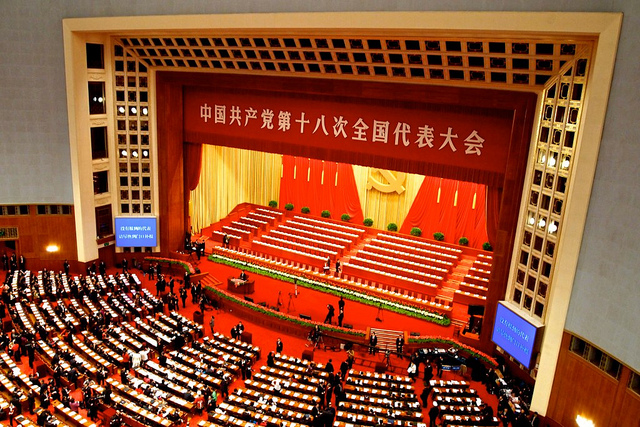Beijing’s anti-corruption drive: what’s at stake? (part 1)
The Chinese Communist Party’s (CCP) anti-corruption drive is of staggering scale, reach and audacity. From the powerful ‘tigers’ to the low-ranking ‘flies’, the anti-corruption policy of Xi Jinping’s leadership has targeted and frightened multiple segments of the party, government, military, and state-owned enterprises.
Many have since wondered about the motivation and nature of the wide-ranging and ambitious anti-corruption policy unleashed by President Xi and carried out by Wang Qishan, who is Secretary of the powerful CPC Central Commission for Discipline Inspection (CCDI) and one of the seven members in the Politburo Standing Committee.
On 9 September, I attended a now-annual conference co-hosted by the International Department of the CCP Central Committee and the Central Commission for Discipline Inspection of the CCP Central Committee. This year’s theme was To Discipline the Party: Responsibility of the Party. It was appropriate that Wang—who’s in charge of the party’s anti-corruption drive and the broader strategy of ‘comprehensively disciplining the party’—agreed to offer his views to a select group of scholars and officials from China and abroad.
As I listened to Wang’s remarks at the Great Hall of the People, I realized that he was making a revolutionary statement in the history of the CCP. Wang raised an extremely provocative and hitherto taboo idea in CCP political discourse: he spoke of the legitimacy of CCP rule. Never before has the CCP leadership openly raised and even questioned the legitimacy of its own rule. Moreover, Wang actually set out to explain the legitimacy of CCP’s long one-party rule in China, which he pointed out to be the key distinguishing characteristic of Chinese politics. The legitimacy of CCP rule, Wang explained, is based on the ‘endorsement of the people’ and the ‘choice made by the people.’ He elaborated that the CCP depends on the people being satisfied and happy.
Through his comments, Wang was trying to imply that the anti-corruption effort was much more than a short-term expedient for the new leadership to win favor from the public or to establish political authority through factional or interest-groups-related struggles—just some of the hypotheses offered by outside observers for the push. He pointed out that anti-corruption isn’t a political campaign or movement—Mao’s Cultural Revolution taught the CCP that campaigns and movements eventually cease to exist. Anti-corruption, this time, will ‘always be on the road’, and ‘there is only a beginning, never an end’.
Those remarks, together with the invocation of the all-important concept of CCP legitimacy, suggest that Wang is seeing anti-corruption as a long-term strategy to maintain and enhance the legitimacy of CCP rule in China; it’s not just a temporary device for consolidating the rule of the new Xi leadership. Such an explanation would refute many existing hypotheses about anti-corruption. According to this view, what’s at stake in anti-corruption is nothing less than the legitimacy and survival of the CCP as the sole ruling party in China—something much more significant than the survival of the current Xi leadership, which, after all, has an implicit two-term limit of 10 years.
But is that explanation credible? Wang struck many of us in attendance at the meeting as a deeply impressive political leader and as an intellectual. His remarks on the many issues of dissatisfaction the Chinese people have with CCP rule left the impression that the current generation of CCP leaders face significant governance challenges in China. He spoke of the difficulties and complexities of CCP rule in today’s ‘extraordinary difficulty’ period, and he even said that the new leadership hasn’t taken rest for a single day since it took office.
His legitimacy-based explanation of the anti-corruption strategy would be readily comprehensible to a Western audience. The term ‘legitimacy’—Wang used the Chinese translation of hefaxing—is, after all, of Western origin. The difference between Wang’s narrative and many existing explanations for the anti-corruption effort comes down to the timeline: one takes a short-term tactical perspective, the other a long-term strategic view. While many Western analyses focus on the short-term interest maximization and political survival of the new Xi leadership, Wang takes a strategic view geared toward the long-term legitimacy of CCP rule beyond the expediencies of the current leadership.
A second, and final, instalment will look at CCP rule and legitimacy in the context of the party’s new ‘four comprehensives’ governing strategy advanced early this year.










